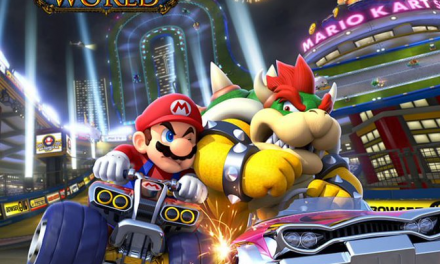We are many months into the bear market that followed nearly 18 months of crypto hype. This boom was dominated by non-fungible tokens (NFT), and during this time a distinct narrative emerged around Web3 gaming. Predicated on early successes such as CryptoKitties, Web3 gaming became the Holy Grail that would finally bring together the scarcity of NFTs, the incentivization of cryptocurrencies and the utility of the metaverse.
So here we are, a year and a half past one of the most remarkable bull markets in the history of crypto. Yet, Web3 gaming isn’t here in the way many predicted. The gaming industry wasn’t taken over, and we have no shining examples of Web3 gaming live in today’s market. The future of Web3 gaming is still bright but it won’t be possible without understanding where we went wrong in this most recent cycle. Specifically, how we were pushing subpar products onto an industry that didn’t need them and gamers who didn’t want them.
Gaming doesn’t need crypto
The traditional gaming industry is on a tear. Its 2022 market cap is $222 billion, and is projected to increase by nearly 50% in the next four years alone. All of this growth is projected without even considering Web3. Innovation in gaming is happening at a breakneck pace with engines like Unreal, AR software, VR hardware and more.
Acknowledging the remarkable pace of innovation in Web3, today’s infrastructure cannot scale to the computing power needed to enable today’s AAA games. This shouldn’t surprise anyone, nor does it mean that Web3 will never scale to the degree it needs. What it does mean, however, is the crypto industry was attempting to bring to market a technology that didn’t line up with the infrastructure needs of the incumbent industry. We may have wanted Web3 gaming to explode onto the scene, but the reality is that the gaming industry just doesn’t need blockchain technology right now.
No, gaming doesn’t need crypto – but gamers might
The most popular arguments in favor of Web3 gaming don’t focus on the infrastructure capabilities of the technology, for the reasons stated above. Rather, the validation for Web3 gaming typically hinges on providing gamers with a richer, more complete gaming experience. The argument goes like this: Games built on blockchain technology can provide gamers with true asset ownership, financial opportunity and creative feedback loops with studios, to name a few. The history of gaming is rife with examples of how gamers have felt cheated or deceived by the industry they love. Web3 principles of sovereignty and collaboration can offer a way for gamers to benefit more richly from the games into which they already pour their time and commitment.
Despite that narrative, the most vocal critics of Web3 gaming since the start of the recent bull market haven’t been gaming studios or publishers, but rather the gamers themselves. Abject vitriol has been directed at Web3 gaming proponents, citing everything from disappointing gameplay to outright fraud.
If gamers and Web3 are supposedly so aligned at their core values, why did the relationship become so strained in the last bull market?
Gameplay, gameplay, gameplay
Ask nearly anyone what the most successful Web3 games are and you’ll get answers like Axie Infinity, DeFi Kingdoms and Wolf Game. These apps gained significant attention (and capital) during the bull market, and came to represent the first wave of “proven” Web3 games. In reality, these titles were little more than decentralized finance (DeFi) apps with a veneer of design and gamification. Any traditional gamer familiar with the fidelity, storyline and aesthetic of titles like Stardew Valley would certainly bristle if they were told that DeFi Kingdoms was the future of gaming.
Nearly every in-market Web3 game during the bull market violated a known rule in gameplay development: Do not overfinancialize the experience. Gamers have made this very clear in the past. In 2012, Diablo III was released with an in-game auction house that kicked back a percentage of each transaction to Blizzard. Diablo III gamers revolted so severely to the auction house that in the next update Blizzard removed it completely.
The lesson is actually quite simple: Gamers despise the prioritization of monetization over gameplay. Nearly every in-market Web3 “game” during this last bull market was primarily a financial application – and gamers sniffed that out immediately. (It’s worth pausing here for a moment to call out a notable outlier: NFT trading card games. The Web3 versions of these games have proven quite successful, likely because their traditional card game counterparts also have a fundamentally financial element in their trading, selling, buying and rarity.)
Web3 gaming isn’t conceptually misaligned with what gamers want but before gamers will even begin to consider the upsides, gameplay must be prioritized above all else.
The next level
In this most recent cycle, gamers have emerged on the other side unscathed. Web3 hasn’t made a significant impact on their daily lives, and they haven’t had to contend with shifting priorities of the games they love or the studios that create them. However, both the gaming and the Web3 ecosystems will continue innovating. As Web3 infrastructure catches up with Web2 capabilities, blockchain-based gaming will be reintroduced to the market. These games will need to attract communities of gamers, and they should look to this most recent bull market for examples of how not to communicate.
More than anything else, gamers want fun, aesthetic games. We want to lose ourselves in the story. Constantly being reminded of financial undertones interrupts that escape and degrades the experience. For Web3 games to be successful, they must above all else be fun to play. It sounds simple, but the most recent attempt to bring Web3 gaming to market suggests we in crypto have a lot more to learn.
Source: CoinDesk





